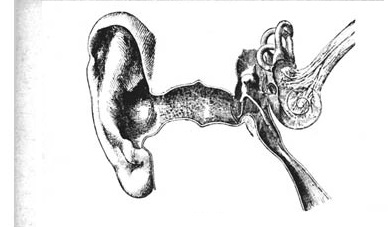Uncategorized
The guardians of balance: the inner ear and vestibular system

The human body is an intricate network of systems working in harmony to maintain our well-being and enable us to interact with the world around us. One of the most remarkable and often overlooked systems is the inner ear and its crucial role in maintaining balance. The inner ear houses the vestibular system, a complex arrangement of structures that serve as the guardians of our equilibrium.
Located deep within the temporal bone on each side of the head, the inner ear consists of two main components: the cochlea, responsible for hearing, and the vestibular system, responsible for balance and spatial orientation. While the cochlea receives much attention for its role in our ability to perceive sound, the vestibular system is equally remarkable in its function.
The vestibular system comprises three semicircular canals and two otolithic organs—the utricle and saccule. These structures work in tandem to detect and transmit information about the head’s movements and position to the brain, ensuring our sense of balance remains finely tuned.
The semicircular canals are responsible for detecting rotational movements of the head. Each canal is positioned in a different plane—horizontal, anterior-posterior, and vertical—to cover all possible directions of movement. These canals are filled with fluid and lined with tiny hair-like structures called cilia, which are connected to sensory cells. When the head rotates, the fluid within the canals also moves, causing the cilia to bend and stimulate the sensory cells. This mechanical stimulation triggers electrical signals that are transmitted to the brain, enabling it to interpret the direction and speed of the head’s movement.
In addition to the semicircular canals, the otolithic organs—the utricle and saccule—play a critical role in detecting linear acceleration and changes in head position. They contain small calcium carbonate crystals called otoliths, which are embedded in a gelatinous layer covered by hair cells. When the head moves linearly or is positioned differently, the otoliths exert pressure on the gelatinous layer, bending the hair cells and initiating the transmission of signals to the brain. These signals provide vital information about gravity, head tilting, and linear acceleration, allowing us to maintain our balance and spatial orientation.
The brain receives and processes the signals from the vestibular system, integrating them with information from the visual system and other sensory inputs to generate a coherent perception of our body’s position and motion. This intricate process occurs instantaneously and unconsciously, enabling us to navigate the world smoothly and effortlessly.
However, when the inner ear’s delicate balance mechanisms are disrupted, it can lead to vestibular disorders, causing symptoms such as dizziness, vertigo, imbalance, and spatial disorientation. Conditions like Ménière’s disease, benign paroxysmal positional vertigo (BPPV), and vestibular neuritis can significantly impact an individual’s quality of life, making simple tasks like walking or driving challenging and disorienting.
Fortunately, medical science has made significant strides in diagnosing and treating vestibular disorders. Advanced diagnostic tools, such as videonystagmography (VNG) and vestibular evoked myogenic potentials (VEMP), help clinicians identify the underlying causes of balance problems accurately. Treatment options range from vestibular rehabilitation therapy (VRT), which utilizes specific exercises to retrain the brain and improve balance, to surgical interventions in severe cases.
The inner ear and the vestibular system, often referred to as the body’s balance organs, are true marvels of human anatomy and physiology. Their intricate design and seamless integration with other sensory systems enable us to maintain equilibrium, adapt to various environments, and enjoy a stable and steady perception of the world. As we continue to explore and understand the complexities of these delicate structures, we unlock new possibilities for diagnosing, treating, and enhancing our sense of balance—an invaluable gift that we should never take for granted.


